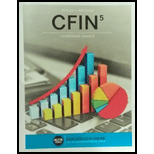
Current price of the
Price of the bond is the
Current yield: It is the ratio of the coupon payment to current price of the bond. It is used to measure the current
_________________________________
Calculate the current price of the bond as follows:
Calculate the current yield as follows:
Calculate the capital gain yield as follows:
D system has outstanding bonds that has face value of $1000 and coupon rate of 7%. Interest is paid semiannually on this bond. Yield to maturity is 10% and remaining time to maturity is 11 years
Trending nowThis is a popular solution!

- Beta Company Ltd issued 10% perpetual debt of Rs. 1,00,000. The company's tax rate is 50%. Determine the cost of capital (before tax as well as after tax) assuming the debt is issued at 10 percent premium. helparrow_forwardFinance subject qn solve.arrow_forwardPlease help with questionsarrow_forward
 EBK CONTEMPORARY FINANCIAL MANAGEMENTFinanceISBN:9781337514835Author:MOYERPublisher:CENGAGE LEARNING - CONSIGNMENT
EBK CONTEMPORARY FINANCIAL MANAGEMENTFinanceISBN:9781337514835Author:MOYERPublisher:CENGAGE LEARNING - CONSIGNMENT
